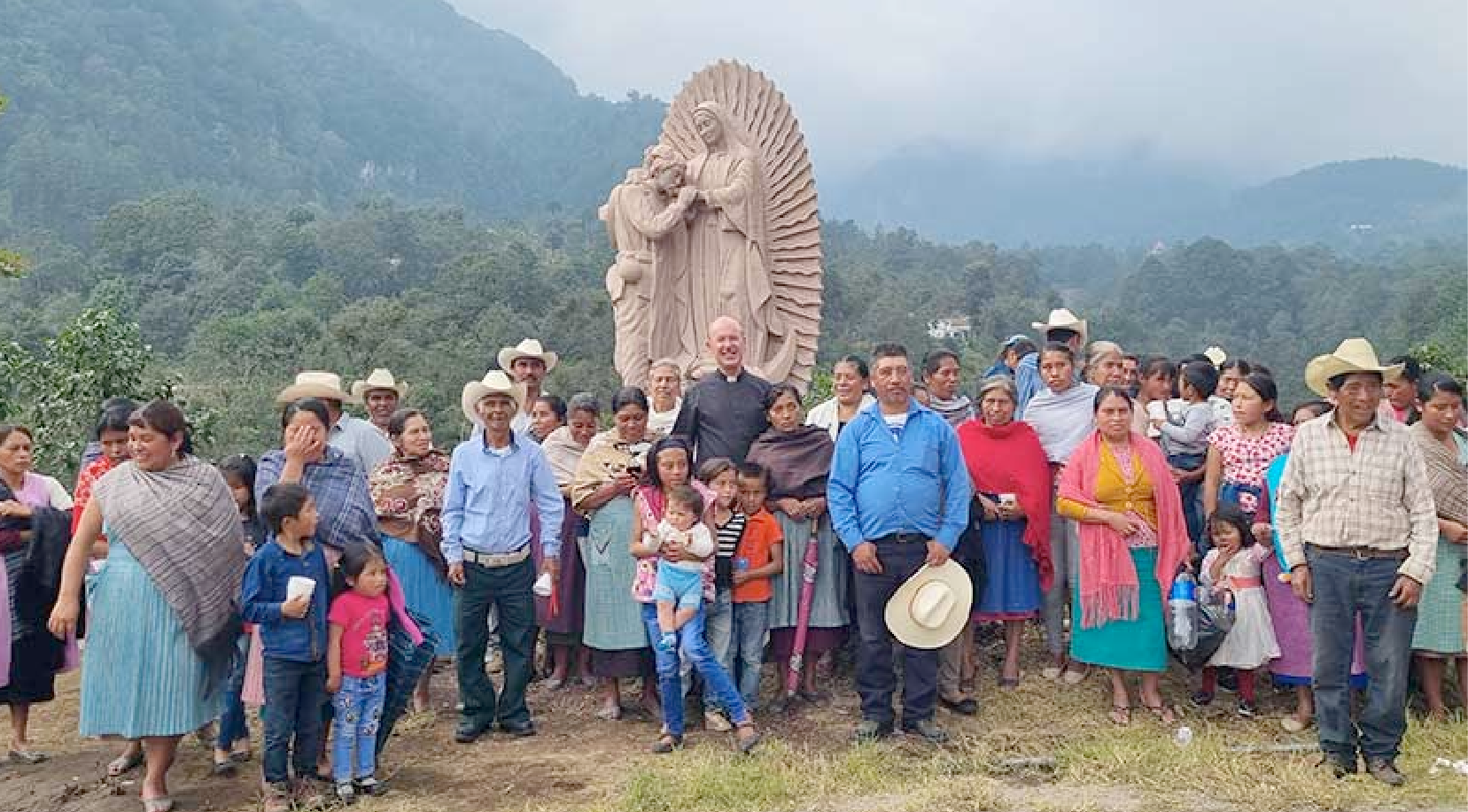(ZENIT News / Orizaba, México, 10.02.2024).- One of the initiatives that has arisen, in the framework of the coming 5th centenary of the Virgin Mary’s apparitions to Saint Juan Diego, is the “Camino de Guadalupe,” around Mexico’s highest peak: the Pico de Orizaba volcano.
Analogous to the Spanish “Camino de Santiago,” it’s an itinerary that makes possible a pilgrimage through beautiful landscapes to promote the New Evangelization around the Guadalupe theme, having the Eucharist and works of mercy at the center.
With the recent blessing of the three new images of the Virgin on the slopes of the volcano, the “Camino de Guadalupe”already has, in short time, twelve “Guadalupe Squares” and reaches half of its route: 50 kilometers. Each one of the Squares has a monumental image of the Virgin of Guadalupe, made by very talented Mexican artists, as can be appreciated in this video:
“In the Camino de Guadalupe, prayer and action go hand in hand,” said to ZENIT Father Evaristo Sada, LC, promoter of the project. Therefore, among the works of corporal mercy — for the benefit of the volcano’s peasants –, which the Legionaries of Christ have carried out, while doing the Camino with the parish priests and local communities, highlighted is the construction of 25 housing units (with 40 others about to be built), 57 kilometers of piping for potable water conduction and the corresponding collection centers for nine communities and various productive projects (200 foliage orchards, 25,000 fruit trees, 80 greenhouses for the cultivation of flowers, 85 chicken coops, etc.).
And why this volcano? Father Sada reminds us that, being the highest peak in Mexico, it symbolizes the highest destiny to which we can aspire — Heaven. Hence, to “pilgrimage on the “Camino de Guadalupe” is to walk with determination to the arms of the Father by the hand of the Virgin Mary and inspired by the volcano’s peasants, genuine Juan Diegos of our times. Mexicans are convinced that the Virgin of Guadalupe is the surest manifestation of God’s loving presence in Mexico.”
Given the great beauty of the landscapes, the sculptures and the Squares, some call it the “Camino of Beauty.” Lovers of nature, hikers, adventurers of mountain cycling and aficionados of photography and painting, meet here in the surroundings. While pilgrimaging, one contemplates the beauty of the nature of the Vera Crus highlands: forests of fog, rivers, cascades, fields overflowing with flowers, flocks of sheep and goats and, especially, hospitable towns.
Father Evaristo Sada, LC, promoter of the “Camino de Guadalupe,” explained that it is “a path of prayer, inspired by beauty; of service, challenged by the poverty; of conversion, attracted by the heavens; and of development, urged by Mexico.



